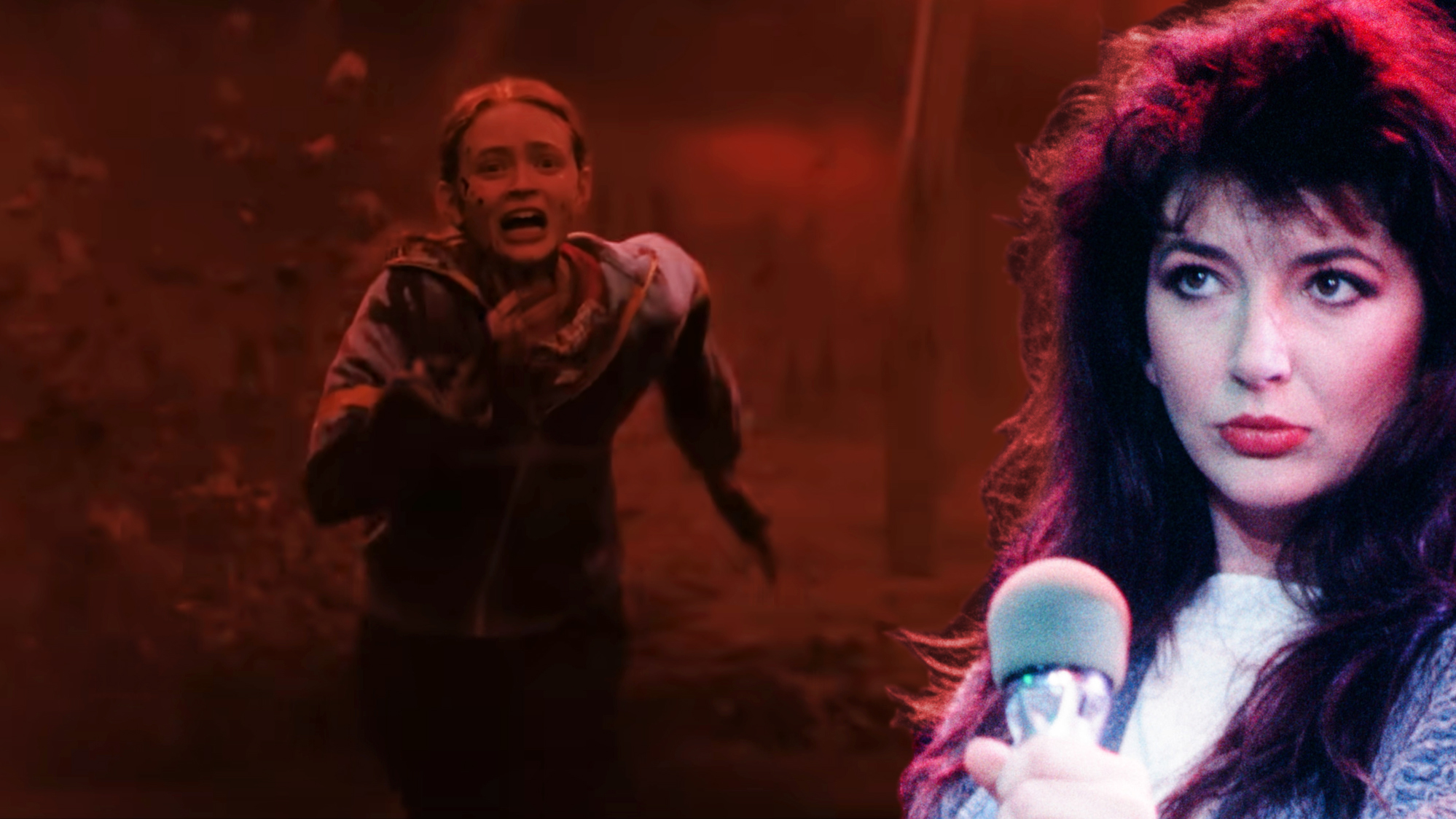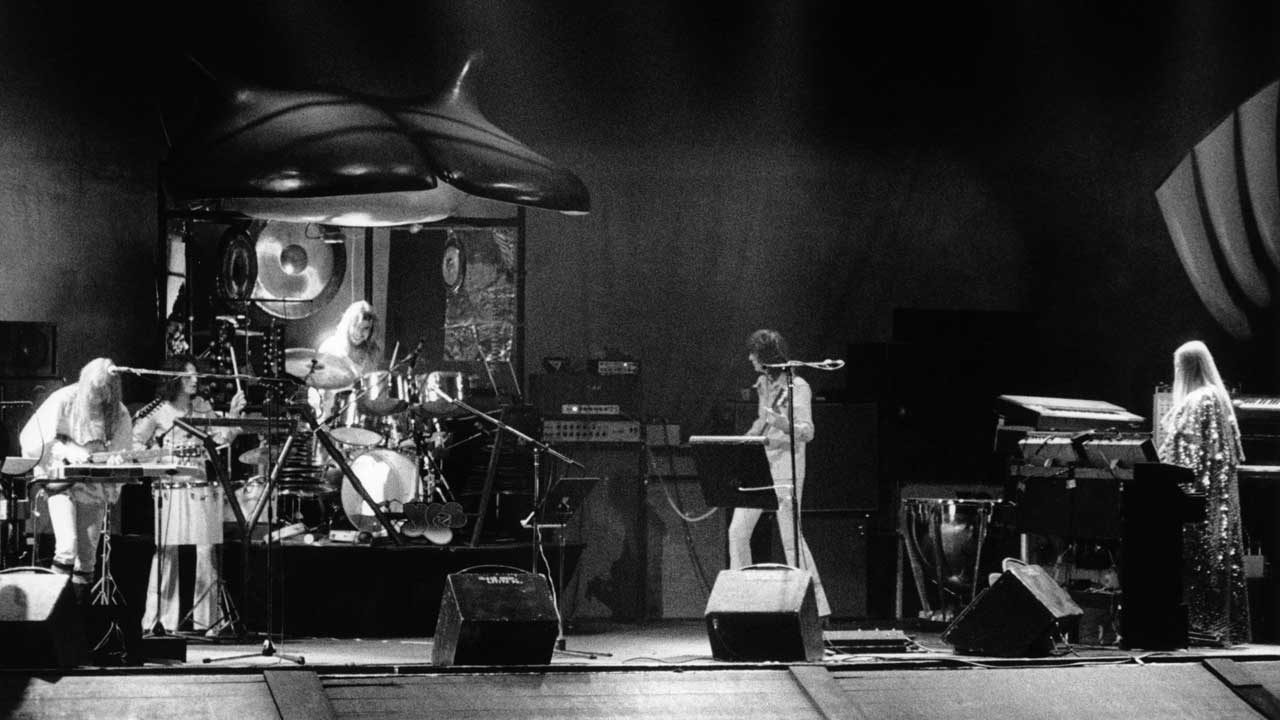“I thought the track would get some attention, but I never imagined it would be like this. The whole world’s gone mad”: The stunning return of Kate Bush’s Running Up That Hill
A No.3 single in 1985, the song topped the charts in 2022 after appearing in Stranger Things – and the planet seemed to go Kate crazy

One of the most heartening moments in the weirdness of the 2020s (so far) was Kate Bush’s return to the charts all around the world after her 1985 song Running Up That Hill featured in a 2022 episode of Stranger Things. Bush was surprised and delighted as it became the 16th-biggest global single of the year – but she remained gloriously grounded, as Prog reported.
When Stranger Things first appeared on Netflix in 2016, it was a sensation. A supernatural retro-set noir about a group of kids who stumble across a young girl with telekinetic powers, the show married The Goonies with The X-Files and, well, just about every show or film you’d ever watched from the 80s. It was an undeniable winner. It rehabilitated Winona Ryder and made an overnight sensation of 12-year-old Millie Bobby Brown, who played the show’s central character, Eleven.
Although the phenomenon settled, the following two series built on the momentum of the first. When teasers for the show’s fourth run began to appear online, word of mouth started growing and it was clear that that season truly was the one. In the episode Dear Billy, Max Mayfield (Sadie Sink) is possessed by Vecna, the show’s main antagonist, who tries to kill her. At the point when it seems far too late, her friends Steve (Joe Keery), Lucas (Caleb McLaughlin) and Dustin (Gaten Matarazzo), play her favourite song, Kate Bush’s Running Up That Hill. She is saved and the audience are left reeling.
It’s one of those moments, like, say, Born Slippy in Trainspotting, Stuck In The Middle With You in Reservoir Dogs or Born To Be Wild in Easy Rider, where the music will be forever linked to that cinematic moment.
Nora Felder, music supervisor on Stranger Things, was asked by showrunners the Duffer Brothers to decide on the appropriate song for their moment. Running Up That Hill seemed thoroughly apposite. But it would need to pass directly by Bush herself, who has complete control of her catalogue – and who’s notoriously sparing when it comes to granting uses for her music.
Fortunately, Bush is a Stranger Things fan. “It’s lovely in a similar way to Harry Potter – where in those early films they were just little kids, and then as it progressed, it became heavier and darker,” Bush said earlier this year. “Those little kids turn into really talented, young adult actors. And you have a different connection with something that’s moved through years of watching them grow.”
As soon as the Stranger Things episode was available to stream on May 27, 2022, Running Up That Hill began scaling the charts. Within a few weeks, it was sitting on top of the UK hit parade, something it had failed to do back in August 1985, when it reached No.3, held off the summit by UB40 and Chrissie Hynde with I Got You Babe and Into The Groove by Madonna.
Sign up below to get the latest from Prog, plus exclusive special offers, direct to your inbox!

The power of streaming made sure that wouldn’t be the case in 2022. No supply and demand from pressing plants; the ‘always on’ nature of streaming meant Bush was there the moment her new audience wanted her.
Like David Bowie, Bush is revered by younger audiences who may not fully understand what she’s on about, but is granted the general acceptance that she’s cool. “In some ways, she reached a point beyond criticism,” biographer Graeme Thomson says. “I imagine people look at her and seeing someone who has complete control of her music, and yet who isn’t in thrall to all the extraneous nonsense which surrounds the industry.
“She has complete artistic integrity; she kept her eye on the prize and she has done so with a sense of purpose and real steel. It is always inspiring to see an artist who will follow her vision completely, no matter how eccentric and sometimes even silly it may seem. And the music, of course, is magnificent – and only seems more so with the passing of time.”
The second side of Hounds Of Love is even further out than The Dreaming – but that got a pass, thanks to Bush cramming the first side with pop songs
“To so many of us who grew up with Kate Bush, watching her connect with a new generation of fans has been one of the musical highlights of the year,” Martin Talbot, Chief Executive of the Official Charts Company, adds. “Kate’s music has always felt uncategorisable, somehow timeless, and the success of Running Up That Hill in reaching No.1 in the 70th year of the Official Singles Chart has seemed to be a vindication of that.”
The song really is timeless. By 1985, the Fairlight CMI synthesiser – of which Bush was an early adopter – had gone from being the rifle-cocking, bottle-smashing novelty of Never For Ever in 1980 to a working, breathing instrument. The combination of its rhythmic texture with Stuart Elliott’s live drumming gives the track its unmistakable feel.
Bush gave one interview to Woman’s Hour on BBC Radio 4 in summer 2022, where she came across as charming, open and effusive – as she had done right from her very first interviews. “What’s wonderful is this is a whole new audience who, in a lot of cases, have never heard of me; and I love that,” she said. “The thought of all these really young people hearing the song for the first time and discovering it... I think it’s very special.”
When Running Up That Hill was first released in 1985, the compact disc was in its infancy; VHS had won the videocassette war with Betamax, and although Live Aid had shown the possibility of pop being more than just a transient turn on Top Of The Pops, its longevity and gravity was still somewhat in question. Bush was always a cut above. A star for seven years by then, with her literary, dance and theatrical inspirations, it was clear with Running Up That Hill that she was staking out a territory beyond her chart peers, such as R&B singer Princess or British ska band Amazulu.
The song has always been viewed as a precious part of her catalogue. It was one of the first she wrote for Hounds Of Love, the album that truly secured her status as the UK’s grande dame of art-pop. It’s hard to imagine now, but there was some uncertainty as to whether Bush would ever regain her commercial appeal after making the frankly peculiar The Dreaming in 1982. Aside from Sat In Your Lap – the single issued over a year before its release – the album contained no hits, and those outside the castle walls of fandom thought that may have been it for her. If it had been, Bush would still have been highly regarded; but in the wider world, she would have been seen only as the novelty hitmaker of her No.1 single, Wuthering Heights.
The second side of Hounds Of Love is actually even further out than The Dreaming – but that got a pass, thanks to Bush pulling off the marvellous trick of cramming the first side with pop songs, opening with Running Up That Hill.
Its message chimes very loudly right now; particularly, perhaps, with the younger generations
Graeme Thomson
“It was very nice for me that it was the first single released; I’d always hoped that would be the way,” Bush said in 1985. “It’s very much about a relationship between a man and a woman who are deeply in love, and they’re so concerned that things could go wrong – they have great insecurity, great fear of the relationship itself.”
Thomson (author of her best-selling biography Under The Ivy) says: “It was clear that its use in Stranger Things was thought about very deeply by both the showrunners and Bush herself. It held meaning for the character, which ensured it had a lasting and emotional impact throughout the series, which was profound. It wasn’t done cheaply.
“Then there’s the song itself, which sounds remarkably fresh today. Its message is mutable, positive, and oddly current. The desire for fluidity, resilience and empathy, to experience all sides of the human experience – psychologically, sexually, philosophically – in order to better understand each other chimes very loudly right now; particularly, perhaps, with the younger generations.”
Running Up That Hill sounds like Florence And The Machine, St Vincent and Billie Eilish, which is another reason why the song slipped down so easily among a wide audience. Of course, there were sections of the internet who felt they had lost ‘their star.’
“I didn’t hear much of that, but it’s ludicrous,” Thomson says. “An artist survives into posterity by successive generations listening to them. It’s exciting to see younger people discovering Bush and to see the elements they connected with. Also, it’s exciting to see her finally getting some mainstream success in America, where her profile was always understated.”
“I thought the track would get some attention,” admits Bush herself. “But I never imagined that it would be anything like this. It’s so exciting – but it’s quite shocking really, isn’t it? I mean, the whole world’s gone mad.”
It’s just extraordinary what’s happening. And it’s very exciting Kate Bush
Chart boss Talbot notes: “The success of Running Up That Hill has caused a massive surge of interest. By halfway through 2022, Kate’s catalogue had generated 67.5m streams in the UK, already more than in the whole of 2021 [63m]. More than half of these were for Running Up That Hill, which had achieved 35m streams, compared to 11m in the whole of 2021.
“The second most popular Bush track is Wuthering Heights with 5.9m streams, with Babooshka third on 4.2m streams and This Woman’s Work on 2.9m streams. In 2021, Babooshka was second [with 10.2m], with Wuthering Heights third [9.3m] and This Woman’s Work in fourth [5.3m].
“It’s worth noting that the stream volume of Kate’s music has exploded over the past 10 years, from just under 11m in both 2014 and 2015 – although that also reflects the growth in the popularity of streaming.”
Probably the best thing is how she has reached that status, that level of love, without actually doing anything. It’s the ultimate win-win situation. Will this mean a new burst of activity from her? Author Thomson thinks not: “History suggests that there isn’t much of a case to be made for cause and effect. One thing she has always done is make music away from any sense of outside pressure or stimulus.
The standard rhythms of the industry are alien to her… I imagine she continues to work on new music, and I hope we’ll hear it one day
Graeme Thomson
“I write in Under The Ivy that I’d hoped her Before The Dawn shows in 2014 might lead to a new period of increased visibility and productivity, but that hasn’t proved to be the case. The standard rhythms of the industry are alien to her.
“I imagine she continues to work on new music, and I hope we’ll hear it one day, but I don’t think that will be much affected by what has happened with Running Up That Hill and Stranger Things.”
Bush remains tight-lipped, but ever-gracious. “I just want to say thank you very much,” she told Woman’s Hour presenter Emma Barnett. “Thank you to everyone, because it’s just extraordinary what’s happening. And it’s very exciting.”
Daryl Easlea has contributed to Prog since its first edition, and has written cover features on Pink Floyd, Genesis, Kate Bush, Peter Gabriel and Gentle Giant. After 20 years in music retail, when Daryl worked full-time at Record Collector, his broad tastes and knowledge led to him being deemed a ‘generalist.’ DJ, compere, and consultant to record companies, his books explore prog, populist African-American music and pop eccentrics. Currently writing Whatever Happened To Slade?, Daryl broadcasts Easlea Like A Sunday Morning on Ship Full Of Bombs, can be seen on Channel 5 talking about pop and hosts the M Means Music podcast.

